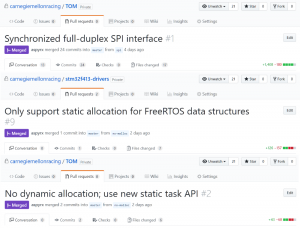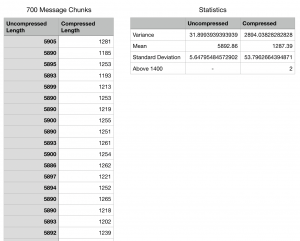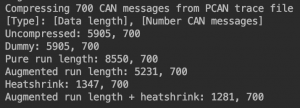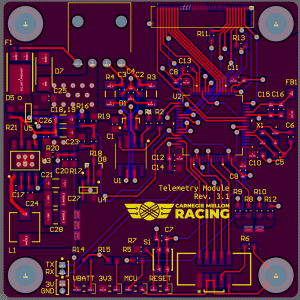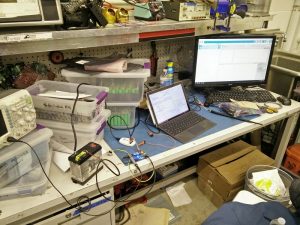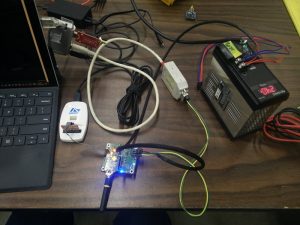This week I modified the CAN codec heatshrink configuration to improve performance. This invalidated the use of the augmented run length (ARL) algorithm, as on average the compression ratio of heatshrink alone is better than the compression ratio of ARL+heatshrink. The statistics for 800 messages per block are in the image below.
We visited a 1.5km line-of-sight bike path to range test the Wi-Fi X-Bee radios.
I am behind on the configuration API and firewall given school work, the design report, and our range-testing trip. I will be writing them over spring break and then testing them when I next have access to the dev boards in FMS. These two softwares aren’t terribly complicated, so I should be able to finish them by the end of next week.
